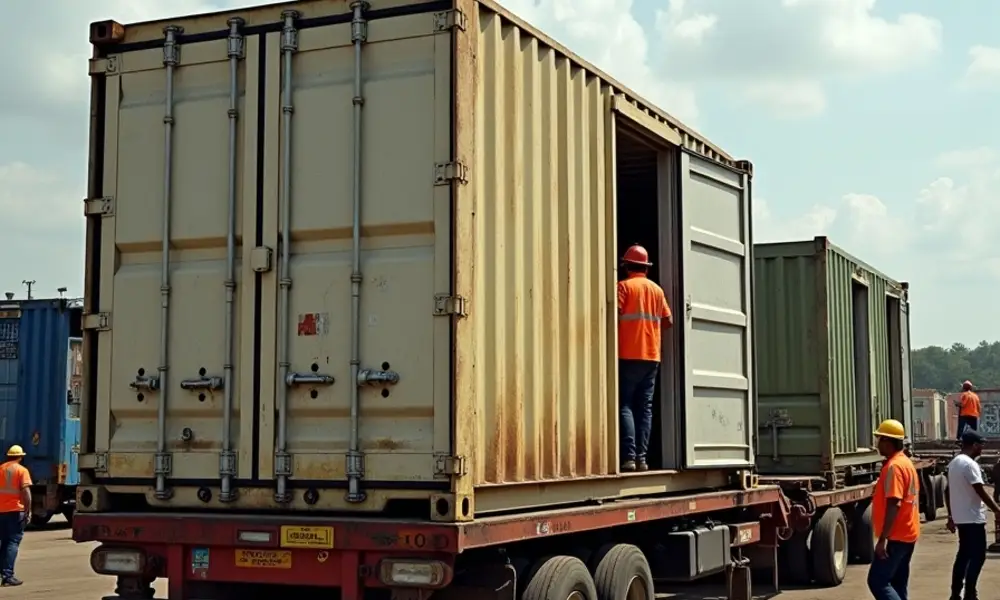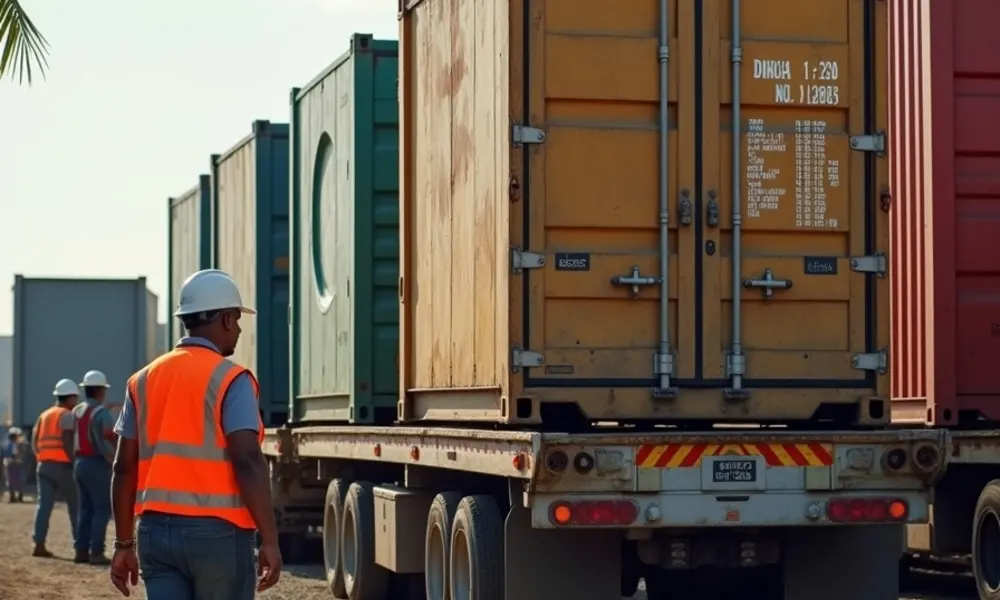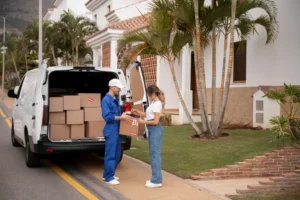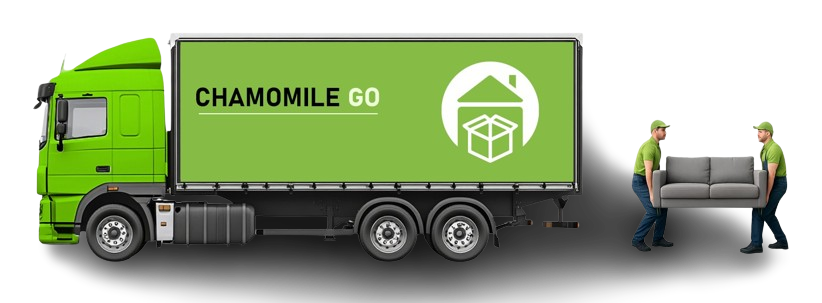Moving to a new home can be both exciting and overwhelming, especially when it comes to managing costs and logistics. Portable storage containers have revolutionized the moving industry by offering a flexible, convenient alternative to traditional moving trucks.
What is the average cost of PODS moving? This is one of the most common questions homeowners ask when planning their relocation. Understanding the pricing structure helps you budget effectively and avoid unexpected expenses. The cost typically depends on factors like distance, container size, and rental duration. In this guide, we’ll break down everything you need to know about PODS moving costs to help you make an informed decision.
What is the Average Cost of PODS Moving in 2025?

If you’re planning a move, you’re probably wondering about the cost of using PODS for your relocation. PODS provides portable storage containers that work great for both local and long-distance moves, plus temporary storage solutions. The price you’ll pay depends on several key factors, including where you’re moving, the container size you choose, and when you’re planning to move. On average, local moves typically run between $200 and $800, while long-distance relocations can cost anywhere from $450 to $7,600.
PODS Local Moving Costs
Local moves are generally more budget-friendly since you’re not traveling far. For a local PODS move, you can expect to pay between $200 and $800, depending on a few important factors. The size of container you select plays a major role in pricing—larger containers naturally cost more. The length of time you keep the container also affects your total cost, as does the number of times you need PODS to pick up or deliver the container to different locations. The longer you keep it or the more services you require, the higher your final bill will be.
PODS Long-Distance Moving Costs
Moving across state lines or cross-country? Long-distance PODS moves come with higher price tags due to increased transportation expenses, fuel costs, and complex logistics involved in getting your belongings to their destination. For these types of moves, costs generally fall between $450 and $7,600. Several factors influence where you’ll land in that range: the total distance of your move, the size and number of containers you need, and your moving timeline. Timing matters too—if you’re moving during peak season (typically summer months), expect to pay premium prices since demand is at its highest during this period.
PODS Short-Term Storage Rates
Need to store your belongings for a while? PODS offers flexible short-term storage options with monthly rates ranging from $149 to $349, depending on your location and the container size you need. It’s important to note that storage fees are separate from transportation costs. So if you’re combining moving and storage services, your total PODS cost will include both the delivery/transportation charges and the monthly storage fees for however long you need to keep your items stored.
When Would Someone Use PODS for Moving?
PODS is the perfect solution for people who prefer moving at their own pace instead of sticking to a strict moving company schedule. It’s designed with the DIY mover in mind—PODS delivers a portable container right to your doorstep, you load it whenever it’s convenient for you, and when you’re ready, they come back to pick it up and transport it to your destination.
Best Scenarios for Using PODS Moving
Temporary Relocations or Extended Trips
Planning a temporary move for work, military deployment, or a seasonal living arrangement? PODS offers the flexibility you need. You can keep your container for as long as necessary, making it simple to transition back home or move to your next location without the hassle of unpacking and repacking your belongings multiple times.
Moving with a Storage Gap
One of the biggest advantages of PODS is the ability to combine moving and temporary storage in one seamless solution. Let’s say your new home isn’t ready yet—PODS can store your loaded container at their secure facility until you give the green light for delivery. This is incredibly helpful when you’re dealing with closing delays, waiting for renovations to wrap up, or counting down the days until your lease begins.
Downsizing or Home Renovation Projects
If you’re decluttering, staging your home for sale, or tackling a renovation, PODS containers are lifesavers. You can keep a container right on your property filled with furniture and belongings that would otherwise be in the way. This keeps your home organized, protects your items while contractors are working, and eliminates the need to haul everything to an off-site storage facility. Everything stays accessible yet out of the way until you need it again.
You may read How Does Pods Moving Cost Per Mile Work?
What Can You Store in a PODS Container?

A PODS container provides a great multi-purpose solution for storing and moving various household items, ideal to store and move your items. Regardless of whether you’ll use it for a local move or an interstate move, you can effectively save on POD moving by understanding exactly what is safe to pack and store!
Typical Household Goods
Most commonly, people use PODS containers to store everyday household items such as:
- Furniture (sofas, beds, tables, chairs)
- Household appliances (refrigerators, washers, dryers)
- Boxed clothing, books or kitchen items
POD containers are weatherproof and can protect your goods in transport or storage, so you’ll likely be able to make the most of your costs with a pod move with these items.
Seasonal/Occasional Items
PODS is also an excellent insurance option for storage of occasional or seasonal items, especially if you are doing renovations on your home, if you are simply downsizing your current living arrangements, or if you are creating some sort of additional space at your residence.
Such items may include:
- Sports equipment (surfboards, bicycles, skis, snowboards, etc.)
- Holiday decor
- Patio furniture or gardening tools environment спасала
Things You Should Not Store
PODS prohibits storage of certain materials for safety purposes. Below is a list of such restrictions:
- Flammable items (gasoline, propane tanks, fireworks)
- Perishables (fresh food, plants)
- Hazardous materials (pesticides, chemicals, explosives)
Why Proper Packing is Important
PODS are designed to be strong and durable but proper packing of your items is essential for transporting things securely and protecting them while in PODS storage. Use sturdy boxes, bubble wrap, moving blankets, and tie-down straps to secure your items. Proper packing not only ensures the safety of your valuables but can also maximize space, which can lower the total cost of PODS moving by fitting your belongings into fewer containers.
What Factors Can Affect the Cost of Short-Term Storage?
Understanding the variables that impact your PODS storage bill makes it easier to budget effectively and find ways to save money. Here are the main elements that shape your final costs.
1. Container Dimensions
PODS offers three size categories to match different storage needs. Opting for a larger unit means paying more upfront, but it could save you money compared to renting multiple smaller containers. Before deciding, calculate your storage volume carefully—sometimes one large container proves more economical than two or three compact ones.
2. Duration of Storage
The monthly rental model means your costs accumulate the longer you hold onto the container. Timing your move strategically can significantly reduce expenses. If possible, coordinate your move-out and move-in dates to minimize gap time and shorten the storage duration you’ll need to pay for.
3. Storage Placement Options
You can choose to keep your container either on-site at your home or at an official PODS storage facility. Facility storage typically adds extra monthly charges to your bill, but many people find it worthwhile for the added security and convenience, especially when dealing with limited space at their property.
4. Access Requirements
Each time you need to open your container while it’s in storage, you may face additional service charges. These fees cover appointment coordination, container transportation, and handling. To minimize these costs, pack strategically—keep items you’ll definitely need separate from storage, so you won’t have to arrange container access later.
5. Time of Year
Moving industry prices fluctuate with seasonal demand patterns. Peak season typically May through September sees elevated rates as more people choose to relocate during warmer months and between academic terms. Scheduling your storage needs during the off-season or reserving your container well in advance can help you secure more competitive pricing.
Comparing PODS Moving vs. Full-Service Movers
When planning a move, one of the first decisions you’ll face is whether to use PODS or hire full-service movers. Each option comes with its own benefits and drawbacks, and the right choice depends on your needs, budget, and moving style.
PODS Pros
- Flexibility – You can load and unload at your own pace without strict moving day deadlines.
- Storage Combo – PODS combines moving and storage in one solution, which is ideal if your new home isn’t ready yet.
- Self-Paced Packing – You control your schedule, making it less stressful if you prefer to spread out the work.
PODS Cons
- Heavy Lifting Required – You’re responsible for loading and unloading your belongings.
- Possible Higher Cost for Long-Term Storage – If you keep your PODS container for months, storage fees can add up quickly.
Full-Service Movers Pros
- Professional Packing – Movers handle everything from wrapping furniture to boxing up fragile items.
- Faster Move – Your belongings are loaded, transported, and unloaded quickly.
- No Heavy Lifting – Professionals take care of the physical work, which can reduce injury risks.
Why Choose Chamomile Go Instead?
At Chamomile Go, we offer a personalized, cost-effective, and stress-free alternative to both PODS and traditional full-service movers. Our team combines the flexibility of self-paced moving with the convenience of professional assistance. Whether you need local moving services in Sherman Oaks or help with packing, loading, and unloading, we make the process smooth from start to finish.
Final Thoughts
Using PODS for moving can be a very flexible option, especially if you need both transportation and short-term storage. However, it is important to keep in mind that the average cost of PODS moving can quickly mount up when delivery fees, container size, rental duration, and storage location are taken into account.
If you want a smoother, faster, and more cost-efficient move without the heavy lifting or surprise charges, Chamomile Go is your best choice. We handle everything from professional packing and careful loading to safe transport and unloading so you can focus on starting your new chapter stress-free.
Skip the hassle of doing it yourself let Chamomile Go move you the right way.
Call us today for your free moving quote and experience the easiest move you’ve ever had.
FAQs
How Much Does It Cost To Move Long-Distance With Pods?
For long-distance relocations, the cost of POD moving usually falls between $450 and $7,600. The exact price depends on mileage, number of containers, and the time of year.
Does The Cost Of A Pod Move Include Storage?
Not always. Storage fees are often separate from the transportation cost. Short-term storage with PODS generally ranges from $149 to $349 per month, depending on the container size and location.
What Factors Affect The Average Pods Moving Cost?
The cost of a pod move can be influenced by the container size, distance, rental duration, location, accessibility needs, and seasonal demand. Summer months often have higher rates due to increased demand.
Are Pods Cheaper Than Hiring Full-Service Movers?
In some cases, yes especially for local or DIY moves. However, for long-distance moves or when you need professional packing, full-service movers can be more cost-effective depending on your situation.
Can I Lower The Cost Of Pod Moving?
Yes. Booking early, downsizing your belongings, choosing the smallest container possible, and avoiding peak moving seasons can all help reduce your PODS moving cost.







